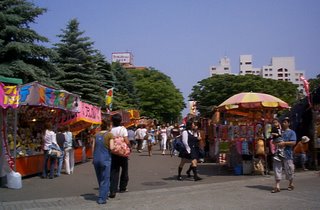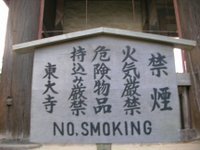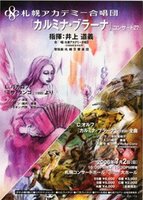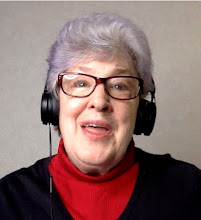 Finally we have an Apple store in Sapporo. It's especially great for those of us in the Sapporo Macintosh Users' Group, at least half a dozen of whom attended the Grand Opening.
Finally we have an Apple store in Sapporo. It's especially great for those of us in the Sapporo Macintosh Users' Group, at least half a dozen of whom attended the Grand Opening. Since I bought my new iBook G4 last September, I won't be in the market for a new computer for some time, but it'll be nice to have a chance to look in person at all the new Apple "toys," rather than just read about them. Some of the employees at the store speak fluent English, so all the better. There's also the possibility that we'll have some SMUG meetings at the store with free presentations on areas such as iPhoto and iPod.
Since I bought my new iBook G4 last September, I won't be in the market for a new computer for some time, but it'll be nice to have a chance to look in person at all the new Apple "toys," rather than just read about them. Some of the employees at the store speak fluent English, so all the better. There's also the possibility that we'll have some SMUG meetings at the store with free presentations on areas such as iPhoto and iPod.I'm seriously thinking of getting an iPod. It's time to get all my music in one portable place. Gone will be the day of drawers and racks full of cassette tapes and CDs.
Another item on my shopping list will be Airport, allowing me to go wireless and access the Internet on my computer anywhere in my apartment, rather than staying stationery. I first got excited about that when I attended the national JALTCALL Conference in June, where the "computer labs" were just movable desks, on top of which everyone was opening up their laptops. When will the classrooms where I teach be like that? (sigh)
[Photos by Don Hinkelman]











